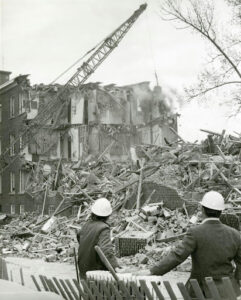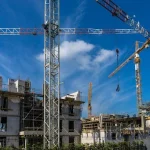The demolition of large-scale structures such as university buildings and sports stadiums marks a major turning point in any institution’s development. These projects are logistically complex, and they carry significant financial, environmental, and emotional considerations. Whether making way for modern facilities or removing outdated, unsafe structures, demolishing such landmarks is a multifaceted endeavor that requires strategic planning and execution.
From understanding the regulatory landscape to ensuring safety and sustainability, here’s what you need to know when preparing for the demolition of academic and athletic structures.

Planning and Permitting the Demolition Process
Before a single wall comes down, extensive planning must take place. These projects typically involve multiple stakeholders, including campus administration, local government, architects, engineers, environmental consultants, and demolition contractors. Each party plays a role in ensuring that the demolition is lawful, efficient, and aligned with broader development goals. Every university and stadium demolition begins with a thorough assessment of the site. This includes structural evaluations, environmental impact studies, and an analysis of any historical or architectural significance. If the building is protected under historical preservation laws or located near other sensitive structures, special permits and careful handling may be required.
Obtaining demolition permits involves satisfying a variety of municipal or state regulations. In many cases, environmental reviews must be conducted to identify and mitigate potential hazards such as asbestos, lead paint, or underground fuel tanks. Public hearings or community meetings may be necessary if the structure holds cultural significance or if the demolition could disrupt surrounding areas.
Failure to comply with these regulations can delay the project or result in legal consequences, so engaging experienced consultants and legal advisors early in the process is important.
Environmental Responsibility and Material Recovery
Demolishing large buildings generates a significant amount of waste—concrete, steel, wood, glass, and other materials that must be dealt with responsibly. Sustainability has become an increasingly important focus in demolition, particularly on university campuses and in public facilities where environmental stewardship is a priority.
Recycling and material recovery should be central to the demolition plan. Salvaging bricks, metal beams, and equipment reduces landfill impact and can be reused in future construction projects, offsetting some of the demolition costs. Specialized contractors can help sort and process materials on-site, ensuring that recyclable components are separated before debris is hauled away.
In some cases, select portions of a structure can be deconstructed rather than demolished, allowing for even greater material reuse. Stadium seats may be sold or donated, and historic facades may be preserved and repurposed as part of new construction. These efforts reduce waste and preserve a sense of continuity with the past.
Addressing Health and Safety Concerns
Demolition is inherently dangerous work, and safety must be a top priority throughout every phase of the project. Large structures, particularly older ones, may contain hazardous materials or unstable elements that require specialized handling.
A comprehensive risk assessment must be conducted prior to demolition. This includes checking for asbestos, mold, lead, and other environmental hazards. Air quality monitoring, dust suppression systems, and proper disposal procedures must be implemented to protect both workers and the surrounding community.
Site access must be strictly controlled with fences, signage, and security personnel in place to prevent unauthorized entry. During active demolition, especially with explosive or high-reach equipment, nearby buildings and streets may need to be temporarily closed.
In stadium demolition projects, where structures may include complex systems like lighting rigs, scoreboards, and cantilevered roofs, contractors must consider engineering challenges to ensure a controlled and safe takedown.
Managing Costs and Timelines
The cost of demolishing a university building or stadium can range from hundreds of thousands to several million dollars, depending on the size, location, and complexity of the structure. These costs include the physical demolition and permitting, environmental remediation, material disposal, labor, and post-demolition site preparation.
Developing a realistic timeline is equally important. Delays can lead to cost overruns and affect broader construction schedules. It’s not uncommon for demolition to be the first phase of a larger redevelopment plan—whether it’s a new science building, student center, or athletic complex. Delays in the demolition phase can ripple through the entire project.
Navigating the Emotional and Cultural Impact
University buildings and stadiums are often more than just brick and mortar—they’re places where students learned, athletes competed, and communities gathered. As such, their demolition can evoke strong emotional reactions from alumni, students, staff, and local residents.
Communicating clearly about why a demolition is necessary and how the site will be redeveloped helps ease resistance. Many universities engage in public outreach campaigns, sharing renderings of the new facility and honoring the history of the old one through commemorative events, plaques, or salvaged elements incorporated into new designs.

Demolishing university buildings and stadiums is never a simple task. It involves layers of planning, coordination, and sensitivity—balancing practical needs with environmental responsibility and community sentiment. By approaching the process with care and foresight, institutions can ensure that the demolition serves as a thoughtful step toward growth and modernization rather than an abrupt end to tradition. Whether preparing for a new academic center or a state-of-the-art stadium, successful demolition lays the foundation for the next chapter in a campus’s story.







